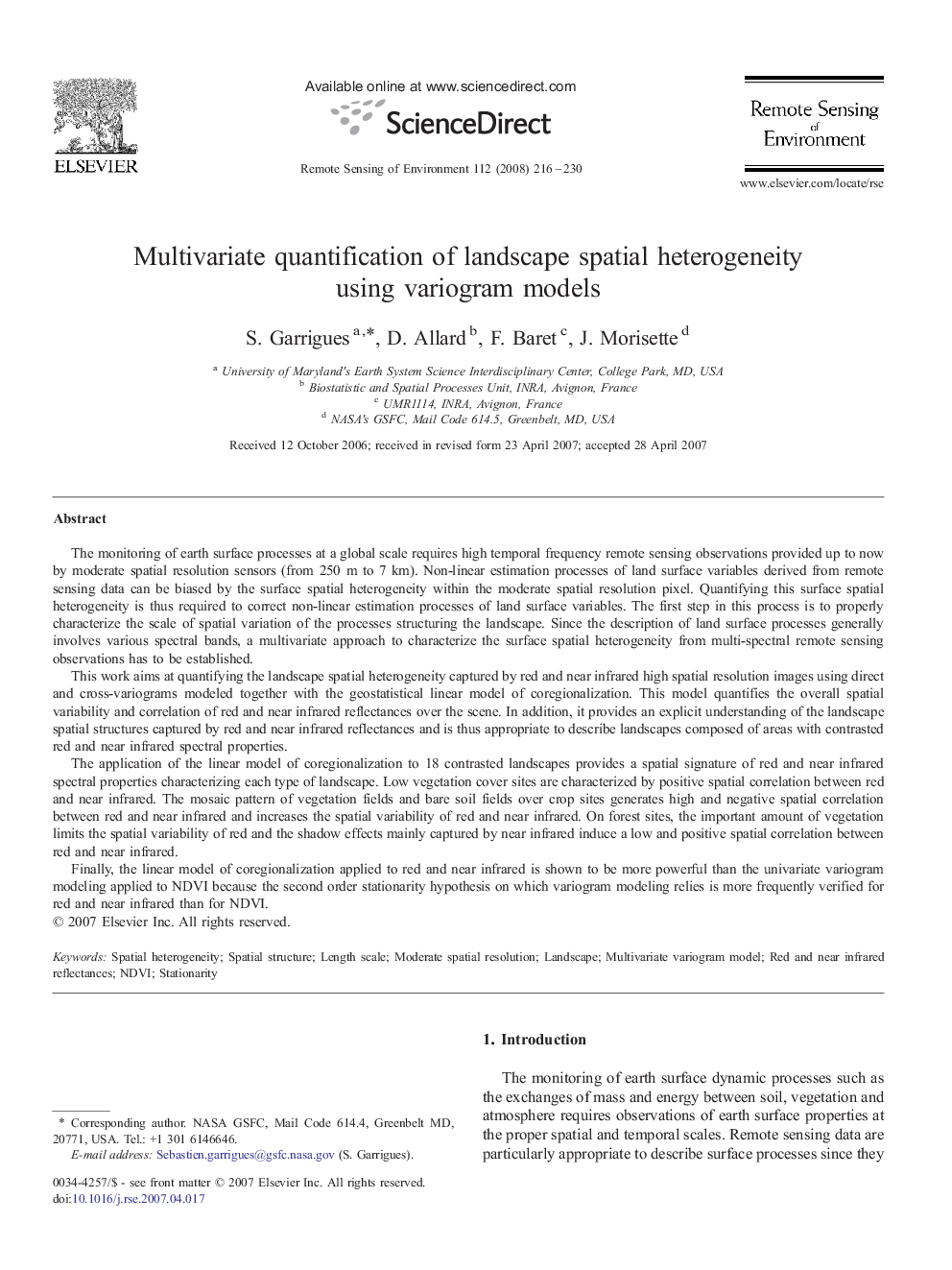| کد مقاله | کد نشریه | سال انتشار | مقاله انگلیسی | نسخه تمام متن |
|---|---|---|---|---|
| 4460547 | 1621333 | 2008 | 15 صفحه PDF | دانلود رایگان |

The monitoring of earth surface processes at a global scale requires high temporal frequency remote sensing observations provided up to now by moderate spatial resolution sensors (from 250 m to 7 km). Non-linear estimation processes of land surface variables derived from remote sensing data can be biased by the surface spatial heterogeneity within the moderate spatial resolution pixel. Quantifying this surface spatial heterogeneity is thus required to correct non-linear estimation processes of land surface variables. The first step in this process is to properly characterize the scale of spatial variation of the processes structuring the landscape. Since the description of land surface processes generally involves various spectral bands, a multivariate approach to characterize the surface spatial heterogeneity from multi-spectral remote sensing observations has to be established.This work aims at quantifying the landscape spatial heterogeneity captured by red and near infrared high spatial resolution images using direct and cross-variograms modeled together with the geostatistical linear model of coregionalization. This model quantifies the overall spatial variability and correlation of red and near infrared reflectances over the scene. In addition, it provides an explicit understanding of the landscape spatial structures captured by red and near infrared reflectances and is thus appropriate to describe landscapes composed of areas with contrasted red and near infrared spectral properties.The application of the linear model of coregionalization to 18 contrasted landscapes provides a spatial signature of red and near infrared spectral properties characterizing each type of landscape. Low vegetation cover sites are characterized by positive spatial correlation between red and near infrared. The mosaic pattern of vegetation fields and bare soil fields over crop sites generates high and negative spatial correlation between red and near infrared and increases the spatial variability of red and near infrared. On forest sites, the important amount of vegetation limits the spatial variability of red and the shadow effects mainly captured by near infrared induce a low and positive spatial correlation between red and near infrared.Finally, the linear model of coregionalization applied to red and near infrared is shown to be more powerful than the univariate variogram modeling applied to NDVI because the second order stationarity hypothesis on which variogram modeling relies is more frequently verified for red and near infrared than for NDVI.
Journal: Remote Sensing of Environment - Volume 112, Issue 1, 15 January 2008, Pages 216–230